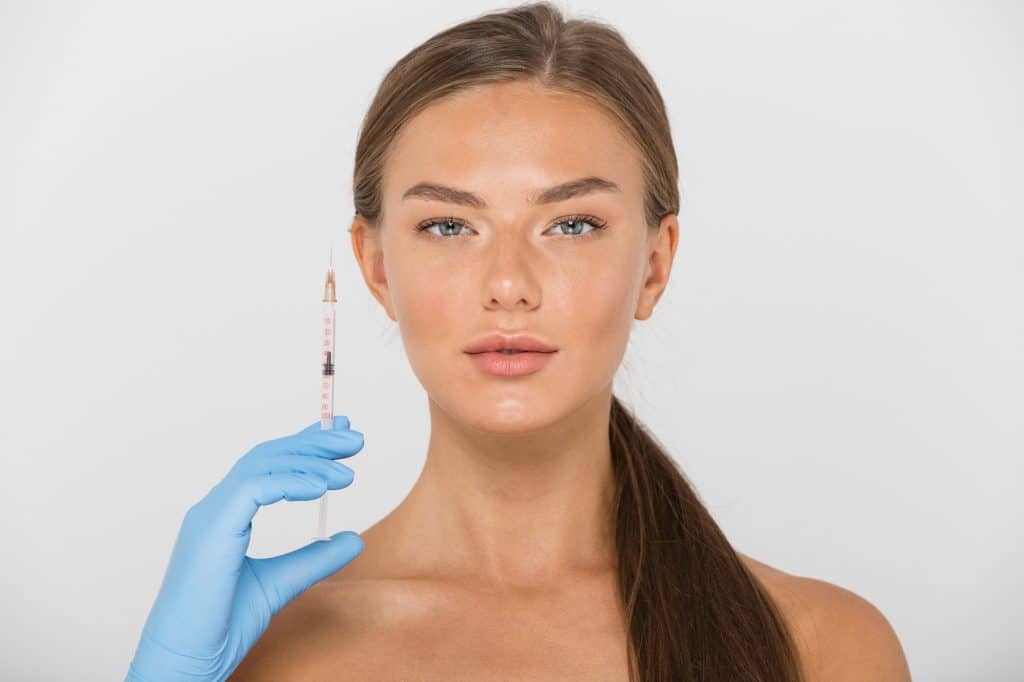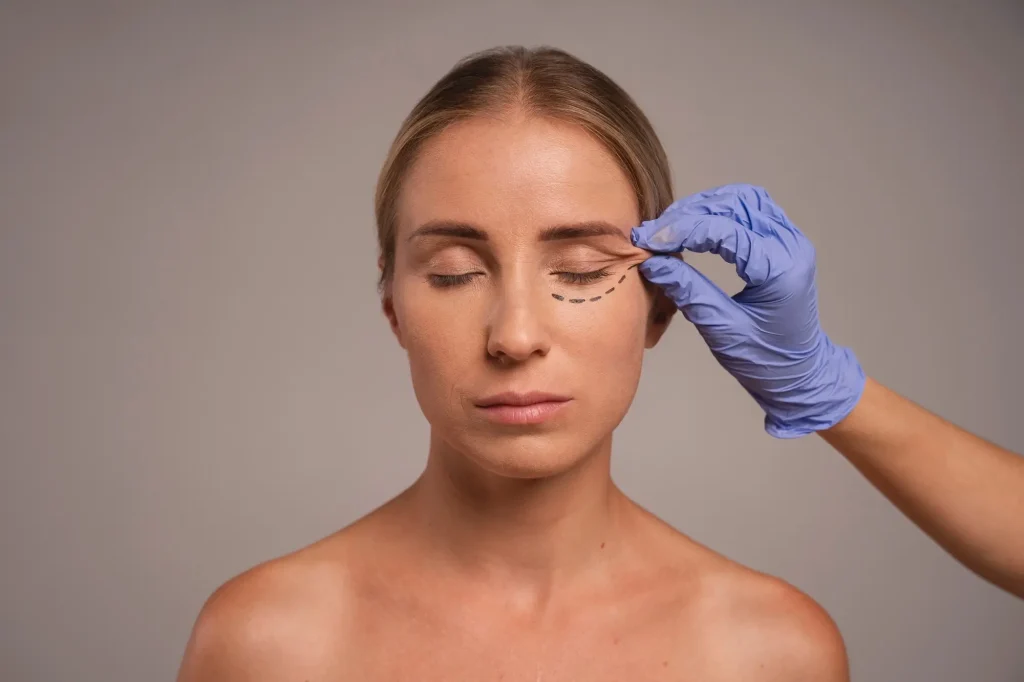Neuromodulator injections have consistently ranked as the top minimally invasive cosmetic procedure in the United States. The American Society of Plastic Surgeons (ASPS) reports a staggering 8.8 million treatments conducted in 2022, marking a 73% increase since 2019. This surge emphasizes the growing trust in neuromodulator efficacy for aesthetic enhancements.
Dysport is among the top brands of neuromodulators. It’s famous for its effectiveness and precision in softening expression lines and wrinkles. Dysport’s unique formulation targets the underlying muscles responsible for dynamic wrinkles, offering patients a non-surgical option for facial rejuvenation.
In this article, we’ll delve into the specifics of Dysport treatments, including Dysport in masseter, exploring protocols and practices to achieve optimal results and ensure patient safety.
Key Takeaways
- Dysport treatment requires a thorough understanding of patient assessment, treatment planning, injection techniques, dosage considerations, and post-treatment care.
- It is essential to prioritize patient goals and expectations while managing their expectations to ensure a satisfactory treatment outcome.
- Proper dosage determination, reconstitution, and administration are crucial for achieving safe and effective results.
- Educating patients on post-treatment care and managing potential side effects is vital for optimizing patient satisfaction and treatment outcomes.
About: Medical Spa RX provides medical practices with premium products at the best prices. If you’re looking to order Dysport online for your practice, the sales representatives at Medical Spa RX can give you guidance.
Understanding Dysport Treatment
Dysport is an FDA-approved injectable neuromodulator that can effectively address fine lines and wrinkles, especially the frown lines between the eyebrows, for up to four months. Healthcare professionals also use this treatment off-label for other aesthetic enhancements and medical conditions caused by muscle spasticity.
This injection functions similarly to Botox, with both treatments temporarily halting communication between nerves and muscles. Dysport’s powerful formulation prevents the targeted muscles from contracting, one of the leading causes of wrinkles on the overlying skin.
As Dysport prevents muscle contractions, it helps reduce the appearance of existing lines and can also stop future wrinkle formation by minimizing muscle movement.
Indications for Dysport Treatment

Dysport can treat moderate to severe frown lines between the eyebrows. Aesthetic specialists can also administer Dysport in masseter muscles if a patient wants to achieve a more defined, better-shaped jawline. Other areas where it can deliver facial rejuvenation are the chin and neck bands.
Other licensed professionals can use Dysport for medical conditions, including cervical dystonia, which causes abnormal head position and neck pain. It can also treat spasticity in patients two years of age and older. Dysport’s versatile formulation can also treat muscle spasms and limb stiffness.
Patient Assessment and Consultation
To ensure safety and efficacy, healthcare professionals should perform a comprehensive patient assessment before administering Dysport. This evaluation should include a detailed medical history, physical examination, and an understanding of the patient’s skin condition. It helps identify any contraindications or potential risks associated with the treatment.
Moreover, a thorough assessment allows practitioners to tailor the treatment plan to the individual’s unique facial anatomy and muscle dynamics, essential for achieving optimal results.
Identifying Patient Goals and Expectations
Understanding the patient’s goals and expectations is critical to the consultation process. Patients may seek Dysport treatments for various reasons, from cosmetic enhancements like smoothing wrinkles to therapeutic uses such as managing muscle spasticity.
It’s essential to have a clear conversation about what the patient hopes to achieve and to provide realistic expectations about the treatment outcomes. This dialogue ensures that the treatment aligns with the patient’s desires and sets the stage for satisfaction with the results.
Managing Patient Expectations
Managing patient expectations involves clear communication about the potential results, duration of effects, and possible side effects of Dysport injections. Doctors should inform their patients that results typically appear within 2-3 days and can last up to four months.
Their providers should also make patients aware of the common side effects, which are generally mild and temporary. Setting realistic expectations helps prevent dissatisfaction and promotes a positive treatment experience. Regular follow-up appointments are also necessary to assess the effectiveness of the treatment and make any necessary adjustments.
Treatment Planning and Injection Techniques

A personalized treatment plan for Dysport is essential to address each patient’s unique needs and goals. This plan considers several factors:
- Patient’s Goals: The treatment provider must prioritize the specific areas or concerns the patient wishes to address.
- Muscle Anatomy: The healthcare professional will map out the underlying facial muscles contributing to the targeted wrinkles.
- Dosage Determination: The amount of Dysport needed varies depending on the area treated, muscle strength, and desired effect. Typically, smaller doses are used for subtle improvements, while deeper wrinkles might require more units.
Selecting Appropriate Injection Sites
Selecting suitable injection sites for Dysport is crucial for achieving desired results and minimizing side effects. The FDA-approved site for Dysport is the glabellar lines, which are the frown lines between the eyebrows. However, doctors can also use it off-label for other areas such as crow’s feet and forehead lines.
Injection sites are chosen based on the patient’s facial anatomy, the severity of wrinkles, and the desired outcome. Typically, Dysport injections enter five sites: two in each corrugator muscle and one in the procerus muscle.
Dosage Considerations and Administration

The appropriate dosage of Dysport varies based on the treatment indication, the patient’s muscle mass, the severity of the condition, and the patient’s previous response to botulinum toxin therapy.
- For adults with spasticity or cervical dystonia, the dosage can range up to 1000 Units, divided among affected muscles. The initial dose for cervical dystonia is typically 500 Units, with adjustments made in 250-unit steps according to the patient’s response.
- For pediatric patients, dosing is calculated based on Units per kilogram of body weight.
Selecting the dose based on the muscles affected, the severity of muscle spasticity, prior response, and adverse reaction history following treatment with Dysport is essential. Patients can get repeat treatments when the effect of a previous injection has worn off, but no sooner than 12 weeks after the last injection.
Understanding Reconstitution and Administration
Dysport’s first form is a dry powder. Before intramuscular injection, an expert must reconstitute Dysport with preservative-free 0.9% Sodium Chloride Injection, USP, using an aseptic technique. The dilution instructions vary depending on the desired final concentration, determined by the indication for use.
After reconstitution, an expert must use Dysport for only one injection session and only one patient. When reconstituting, inserting the needle into the vial and allowing the diluent to be pulled into the vial by a partial vacuum is vital. The administering doctor must also immediately use the reconstituted solution; any unused portion should be disposed of properly.
Avoiding Common Dosage Mistakes
- Underdosing: An insufficient dose might not produce the desired level of wrinkle reduction.
- Overdosing: Excessive Dysport can lead to an unnatural frozen appearance or difficulty with facial expressions. A skilled healthcare professional will start with a conservative dose and gradually increase it if needed during subsequent sessions.
- Not Considering Individual Variations: Each patient responds differently to Dysport. Doctors should tailor the dosage to their patient’s muscle anatomy and response to the treatment.
Post-Treatment Care and Follow-Up
After receiving Dysport injections, patients must be well-informed about the care required to maximize the treatment benefits and minimize potential side effects. Some of the guidelines doctors may give are the following:
- Activity Restrictions: For the first 24 hours, it’s recommended to avoid strenuous exercise, excessive heat (saunas, hot tubs), and prolonged bending over. These activities can increase blood flow and cause the Dysport to migrate to unintended areas.
- Minimizing Touching: Avoid touching or rubbing the injection sites for at least 4 hours after treatment. This practice helps prevent the product from spreading to unwanted areas.
- Sleeping Position: Elevating your head during the first night can help reduce swelling around the injection sites.
- Makeup Application: After a few hours, patients can gently apply makeupbut must avoid scrubbing or rubbing the treated areas.
- Pain Management: Over-the-counter pain relievers like acetaminophen can manage any mild discomfort.
Managing Potential Side Effects
While Dysport is generally well-tolerated, some patients may experience side effects such as mild pain, redness at the injection site, headache, or flu-like symptoms. These are usually temporary and resolve within a few days.
Patients can manage these symptoms by using ice packs to alleviate discomfort or taking mild analgesics for pain relief. Clear communication between patients and their providers significantly helps manage these effects, especially if more severe or persistent complications arise from the procedure.
Optimizing Results and Patient Satisfaction
Achieving natural-looking results, patient comfort, and overall satisfaction are vital components of a successful Dysport treatment. Here are some tips to consider:
- Open Communication: Discussing your desired outcome during the consultation helps the healthcare professional tailor the treatment plan to a patient’s aesthetic goals. Patients must be clear about their expectations for a natural look that preserves the face’s natural expressions.
- Conservative Approach: Starting with a lower dose and observing the effects allows fine-tuning the treatment if needed. This strategy minimizes the risk of overcorrection, which can lead to an unnatural appearance.
- Skilled Injector: Patients must choose a qualified and experienced healthcare professional. Their facial anatomy and Dysport injection expertise ensure optimal placement and dosage for natural-looking results.
- Pain Management Techniques: A topical anesthetic cream or ice packs can numb the injection sites and minimize discomfort during the procedure.
- Realistic Expectations: Understanding that Dysport offers temporary improvement and won’t eliminate wrinkles is crucial for patient satisfaction.
Conclusion
Mastering Dysport treatment protocols and best practices requires a comprehensive understanding of patient assessment, treatment planning, injection techniques, dosage considerations, and post-treatment care. Medical professionals can deliver safe, effective, and aesthetically pleasing Dysport treatments that meet patient expectations by prioritizing patient goals, adhering to best practices, and optimizing results.
FAQs
1. How does Dysport work?
Dysport works by temporarily blocking the communication between nerves and muscles. Cosmetically, it can prevent muscles from causing wrinkles on the skin. Therapeutically, it helps address muscle stiffness and relieve migraines.
2. How long does it take for Dysport to work?
Dysport typically takes effect within 2-3 days after treatment, with results lasting about 3-4 months.
3. Do Dysport injections hurt?
Dysport injections may cause mild pain at the injection site, which is a common side effect that usually resolves within a few days.
References
American Society of Plastic Surgeons. Plastic surgery statistics. https://www.plasticsurgery.org/news/plastic-surgery-statistics
Sarzyńska‐Długosz I, Szczepańska-Szerej A, Drużdż A, et al. Real-world effectiveness of abobotulinumtoxinA (Dysport®) in adults with upper limb spasticity in routine clinical practice: an observational study. Neurologia I Neurochirurgia Polska. 2020;54(1):90-99. doi:10.5603/pjnns.a2020.0004
Karsai S, Adrian RM, Hammes S, Thimm J, Raulin C. A randomized Double-Blind study of the effect of Botox and Dysport/Reloxin on forehead wrinkles and electromyographic activity. Archives of Dermatology. 2007;143(11). doi:10.1001/archderm.143.11.1447-b



















